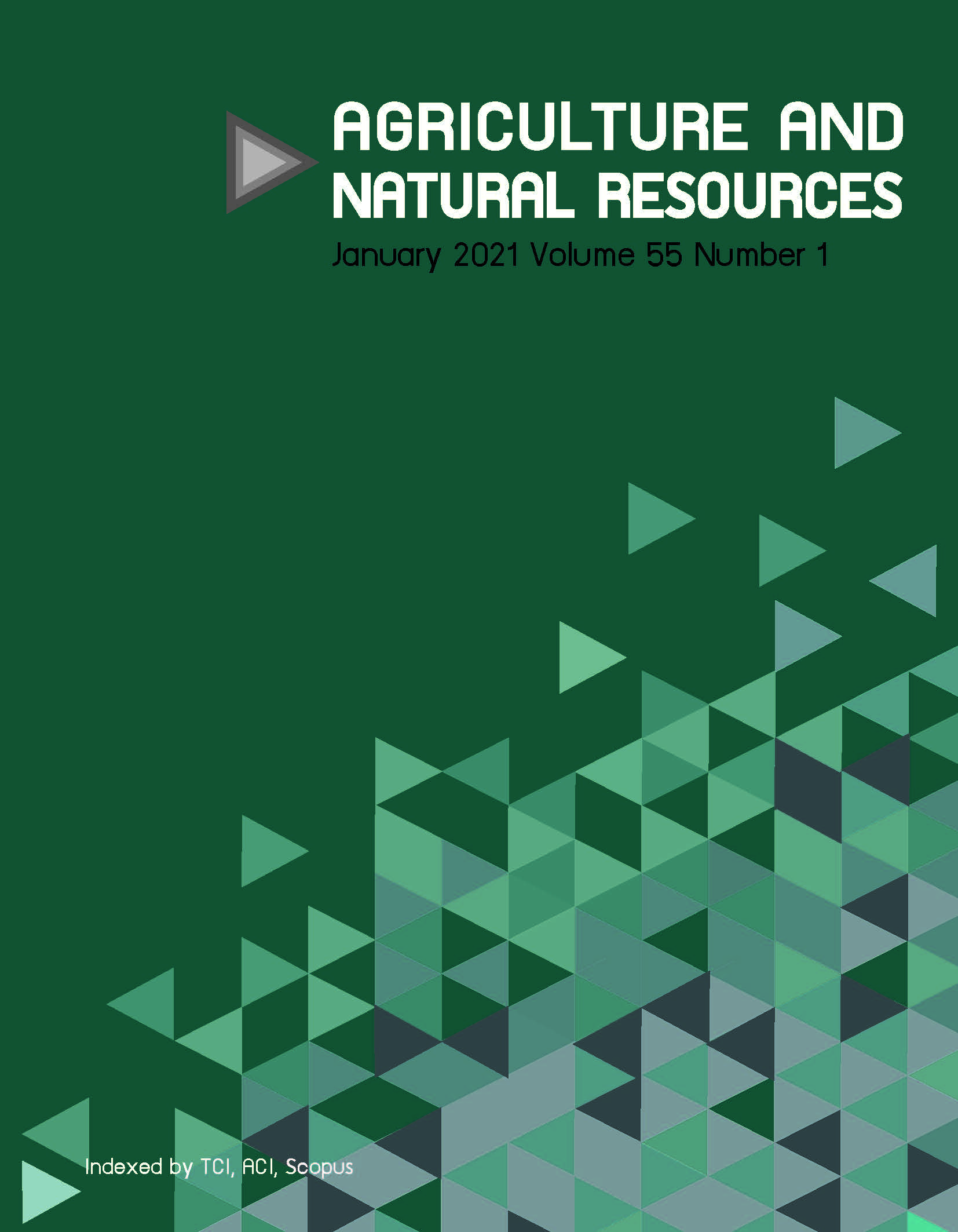Improving water use efficiency and productivity in rice crops by applying alternate wetting and drying with pregerminated broadcasting in farmers’ fields
Keywords:
Alternate wetting and drying, Gas emission, Water saving, Farmer’s fieldAbstract
The supply of irrigation in Thailand is currently insufficient to satisfy rice production demands, despite the country being the world’s leading rice producer and exporter. Thus, traditional rice production based on flooding systems should be changed to water-saving management using the so-called alternate wetting and drying method (AWD). This research introduced a suitable AWD 5/-15 broadcasting method into farmer’s fields in eight provinces of Thailand in the dry and wet seasons of 2016. The results showed that the AWD practice increased grain yields by 8–22% in the dry season compared with the yields from farmer’s practices. The AWD practice reduced total water use by 5–30% and increased water productivity 10–35% compared with farmer’s traditional practices. In addition, the total CH4 emissions from the AWD practice in the dry season were lower than those from farmer’s practices by 7–83%, but the AWD practice in the wet season resulted in decreased CH4 emissions at only three out of the eight sites. The total N2O emissions were slightly different between the AWD and farmer’s practices. However, in both AWD and farmer’s practices, N2O emissions were much lower than CH4 emissions. Finally, the incomes and net profits in both seasons were significantly higher using AWD from 4.4–13.5 USD/ha and 45.8–60.8 USD/ha, respectively, while the total costs for both practices were not significantly different. Thus, AWD practices may help farmers decrease their water supply risk, especially in the dry season, and increase profits from rice production.
Downloads
Published
How to Cite
Issue
Section
License

This work is licensed under a Creative Commons Attribution-NonCommercial-NoDerivatives 4.0 International License.
online 2452-316X print 2468-1458/Copyright © 2022. This is an open access article under the CC BY-NC-ND license (http://creativecommons.org/licenses/by-nc-nd/4.0/),
production and hosting by Kasetsart University of Research and Development Institute on behalf of Kasetsart University.







